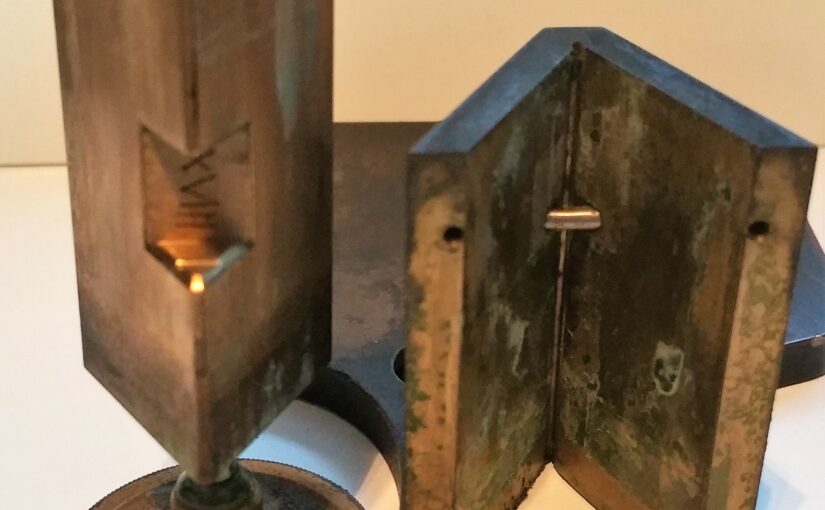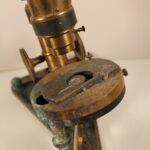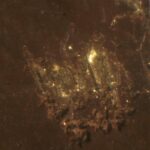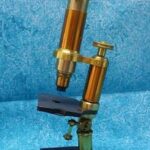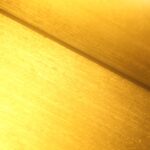The Merz has an interesting design, and not one I have seen before. Most microscopes of this age and style have a solid round bar through which a triangular bar passes. The triangular bar has a screw at one end and a spring at the other and it’s a very effective, simple fine focus mechanism.
The Merz has a rather different set up – it also has a triangular block with a screw at one end and a spring at the other, but instead of passing through a round bar, the triangular block passes through another triangular piece. The outer triangle is constructed from pieces of flat brass which have been joined together by brazing – this might explain why Merz painted these parts rather than lacquering them I think. Using brazed pieces of brass would have saved a lot of wastage and money and it would easily have been strong enough.
A “typical” round Baker fine focus block on the left, the Merz brazed, triangular fine focus mechanism on the right.
Travel could only have occurred in a small area. The solid triangular bar has a cut out area and a small bar is inserted through the corner of the brazed piece which acts as a stop. The pictures make it much easier to understand.

